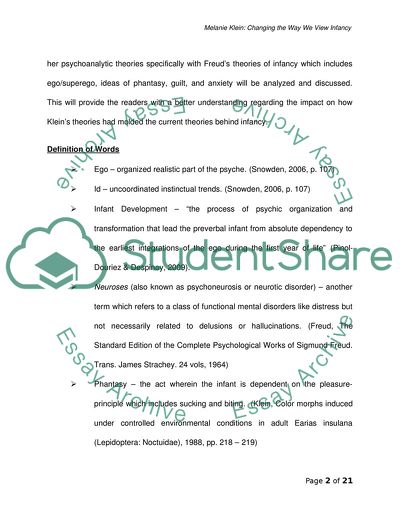Cite this document
(“Melanie Klein: Changing the Way We View Infancy Research Paper”, n.d.)
Melanie Klein: Changing the Way We View Infancy Research Paper. Retrieved from https://studentshare.org/psychology/1554120-melanie-klein-changing-the-way-we-view-infancy
Melanie Klein: Changing the Way We View Infancy Research Paper. Retrieved from https://studentshare.org/psychology/1554120-melanie-klein-changing-the-way-we-view-infancy
(Melanie Klein: Changing the Way We View Infancy Research Paper)
Melanie Klein: Changing the Way We View Infancy Research Paper. https://studentshare.org/psychology/1554120-melanie-klein-changing-the-way-we-view-infancy.
Melanie Klein: Changing the Way We View Infancy Research Paper. https://studentshare.org/psychology/1554120-melanie-klein-changing-the-way-we-view-infancy.
“Melanie Klein: Changing the Way We View Infancy Research Paper”, n.d. https://studentshare.org/psychology/1554120-melanie-klein-changing-the-way-we-view-infancy.


